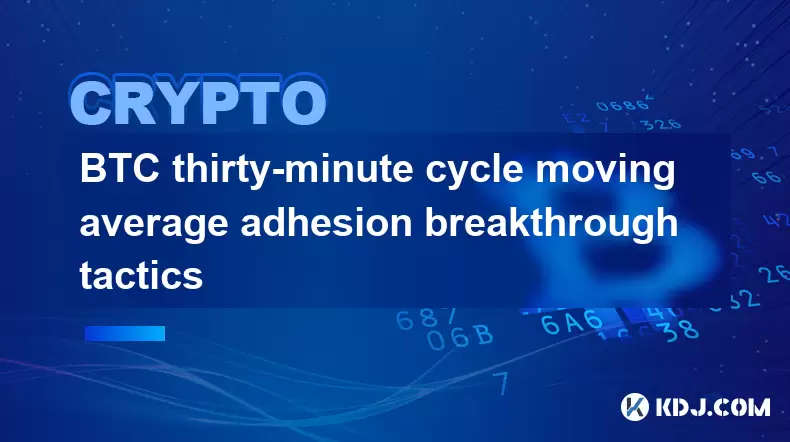-
 Bitcoin
Bitcoin $116300
2.01% -
 Ethereum
Ethereum $3815
5.35% -
 XRP
XRP $3.071
4.46% -
 Tether USDt
Tether USDt $1.000
0.02% -
 BNB
BNB $776.2
1.67% -
 Solana
Solana $173.0
5.70% -
 USDC
USDC $0.9999
0.00% -
 TRON
TRON $0.3389
1.14% -
 Dogecoin
Dogecoin $0.2125
5.92% -
 Cardano
Cardano $0.7627
5.16% -
 Hyperliquid
Hyperliquid $39.00
4.42% -
 Stellar
Stellar $0.4122
5.07% -
 Sui
Sui $3.654
7.22% -
 Chainlink
Chainlink $17.31
5.47% -
 Bitcoin Cash
Bitcoin Cash $582.2
4.28% -
 Hedera
Hedera $0.2521
3.53% -
 Ethena USDe
Ethena USDe $1.001
0.01% -
 Avalanche
Avalanche $22.77
3.47% -
 Litecoin
Litecoin $119.6
2.53% -
 UNUS SED LEO
UNUS SED LEO $8.944
-0.49% -
 Toncoin
Toncoin $3.288
3.95% -
 Shiba Inu
Shiba Inu $0.00001261
3.78% -
 Uniswap
Uniswap $10.12
5.80% -
 Polkadot
Polkadot $3.761
4.23% -
 Dai
Dai $1.000
-0.01% -
 Monero
Monero $285.1
-2.37% -
 Bitget Token
Bitget Token $4.387
1.43% -
 Cronos
Cronos $0.1476
5.88% -
 Pepe
Pepe $0.00001080
4.75% -
 Ethena
Ethena $0.6374
11.58%
BTC thirty-minute cycle moving average adhesion breakthrough tactics
The thirty-minute cycle moving average helps BTC traders identify short-term trends and potential breakthroughs for effective trading strategies.
Jun 04, 2025 at 02:07 pm

Understanding the Thirty-Minute Cycle Moving Average in BTC
In the realm of cryptocurrency trading, technical analysis plays a pivotal role in decision-making. One of the key tools used by traders is the moving average, which helps in smoothing out price data to identify trends over a specified period. For Bitcoin (BTC) traders, the thirty-minute cycle moving average is particularly useful for short-term trading strategies. This moving average calculates the average price of BTC over the past thirty minutes, providing insights into short-term trends and potential reversal points.
What is Adhesion in the Context of Moving Averages?
Adhesion, in the context of moving averages, refers to the phenomenon where the price of an asset, in this case, BTC, closely follows or 'sticks' to the moving average line. This can be a sign of consolidation or a lack of strong directional momentum. When BTC's price is adhering to the thirty-minute moving average, it often indicates that the market is in a state of equilibrium, with neither buyers nor sellers having a significant advantage.
Identifying Breakthrough Opportunities
A breakthrough occurs when the price of BTC decisively moves away from the moving average. This can signal the start of a new trend. For traders, identifying these breakthroughs early can be crucial for capitalizing on potential price movements. When the price breaks above the moving average, it might indicate a bullish trend, whereas a break below could signal a bearish trend.
Tactics for Exploiting Breakthroughs
To effectively exploit breakthroughs in the thirty-minute cycle moving average, traders need to employ specific tactics. Here are some steps that traders might follow:
- Monitor the Moving Average Closely: Keep a close eye on how BTC's price interacts with the thirty-minute moving average. Use charting tools to set up alerts for when the price approaches or moves away from the moving average.
- Look for Confirmation: A single candlestick moving away from the moving average is not enough. Look for additional candlesticks that confirm the direction of the breakthrough. This could include higher highs and higher lows for a bullish breakthrough, or lower highs and lower lows for a bearish breakthrough.
- Set Entry Points: Once a breakthrough is confirmed, set your entry point. For a bullish breakthrough, enter a long position slightly above the moving average to ensure the trend is strong. For a bearish breakthrough, enter a short position slightly below the moving average.
- Determine Stop-Loss Levels: To manage risk, set a stop-loss order just below the moving average for long positions, or just above it for short positions. This helps protect against false breakouts.
- Take Profit Levels: Determine your take profit levels based on previous resistance or support levels, or use a trailing stop to maximize gains as the trend continues.
Practical Example of a Breakthrough
Consider a scenario where BTC has been trading closely around the thirty-minute moving average for several hours. Suddenly, a strong bullish candlestick emerges, pushing the price above the moving average. Subsequent candlesticks continue to form higher highs and higher lows, confirming the bullish breakthrough.
- Entry: Enter a long position at a price slightly above the moving average, say at $30,000, to ensure the trend is strong.
- Stop-Loss: Set the stop-loss at $29,800, just below the moving average, to protect against a potential reversal.
- Take Profit: Identify a previous resistance level at $31,000 as the take profit level, or use a trailing stop to capture more gains if the trend continues.
Technical Indicators to Complement the Moving Average
While the thirty-minute moving average is a powerful tool, combining it with other technical indicators can enhance the effectiveness of your trading strategy. Some commonly used indicators include:
- Relative Strength Index (RSI): The RSI can help identify overbought or oversold conditions. A breakthrough above the moving average accompanied by an RSI moving out of the oversold territory can be a strong bullish signal.
- MACD (Moving Average Convergence Divergence): The MACD can confirm the strength of a breakthrough. A bullish crossover in the MACD can reinforce a bullish breakthrough above the moving average.
- Bollinger Bands: These can help identify volatility. A breakthrough accompanied by the price moving outside the Bollinger Bands can indicate a strong trend.
Risk Management in Breakthrough Trading
Effective risk management is crucial when trading breakthroughs. Here are some key principles:
- Position Sizing: Never risk more than a small percentage of your trading capital on a single trade. A common rule is to risk no more than 1-2% of your total capital.
- Diversification: Do not put all your capital into trading BTC. Diversify your portfolio to mitigate risks.
- Emotional Discipline: Stick to your trading plan and avoid making impulsive decisions based on short-term market fluctuations.
Frequently Asked Questions
Q1: How often should I check the thirty-minute moving average for BTC?
A1: It depends on your trading style. For active traders, checking every thirty minutes or even more frequently can be beneficial. For less active traders, checking every few hours may be sufficient.
Q2: Can the thirty-minute moving average be used for other cryptocurrencies?
A2: Yes, the thirty-minute moving average can be applied to other cryptocurrencies. However, the volatility and trading volume of other cryptocurrencies may affect the reliability of the moving average.
Q3: What is the best time frame to confirm a breakthrough?
A3: While the thirty-minute moving average is useful for short-term trading, confirming a breakthrough over a longer time frame, such as an hour or two, can provide more reliable signals.
Q4: How can I improve the accuracy of my breakthrough predictions?
A4: Combining the thirty-minute moving average with other technical indicators, such as RSI, MACD, and Bollinger Bands, can improve the accuracy of your predictions. Additionally, staying updated with market news and events can help you understand potential influences on BTC's price movements.
Disclaimer:info@kdj.com
The information provided is not trading advice. kdj.com does not assume any responsibility for any investments made based on the information provided in this article. Cryptocurrencies are highly volatile and it is highly recommended that you invest with caution after thorough research!
If you believe that the content used on this website infringes your copyright, please contact us immediately (info@kdj.com) and we will delete it promptly.
- BlockchainFX, Bitcoin Swift, Crypto Presales: What's the Hype?
- 2025-08-07 19:10:13
- SHIB Community at Crossroads: Shytoshi Kusama's Leadership Under Scrutiny as Elections Loom
- 2025-08-07 18:30:13
- IREN Overtakes: A New King in the Bitcoin Miner Hashrate Race?
- 2025-08-07 16:31:29
- Memecoins Mania: Whales Eye Pepe Dollar (PEPD) as Bonk Cools Off, While MoonBull Hogs the Spotlight!
- 2025-08-07 16:51:17
- Unilabs, PEPE, and Investment Risk: Navigating the Crypto Hype
- 2025-08-07 16:31:29
- Meme Coin Mania: Rug Pulls, CZ-Inspired Tokens, and the Wild West of Crypto
- 2025-08-07 16:57:14
Related knowledge

Can the Bitcoin protocol be changed?
Aug 07,2025 at 01:16pm
Understanding the Bitcoin ProtocolThe Bitcoin protocol is the foundational set of rules that govern how the Bitcoin network operates. It defines every...

What are some common misconceptions about Bitcoin?
Aug 07,2025 at 07:22pm
Bitcoin is Just Like Regular MoneyA widespread misconception is that Bitcoin functions identically to traditional fiat currencies like the US dollar o...

How does Bitcoin handle scalability issues?
Aug 07,2025 at 10:54am
Understanding Bitcoin’s Scalability ChallengeBitcoin’s design prioritizes decentralization, security, and immutability, but these principles come with...

Do you need to understand technology to use Bitcoin?
Aug 07,2025 at 06:17am
Understanding the Basics of BitcoinTo engage with Bitcoin, one does not need a deep understanding of the underlying technology, much like how individu...

Can your Bitcoins be stolen?
Aug 07,2025 at 03:28am
Understanding the Security of Bitcoin OwnershipThe decentralized nature of Bitcoin means that no central authority controls the network, placing the r...

How does Bitcoin compare to gold?
Aug 07,2025 at 03:18am
Historical Context and Origins of Bitcoin and GoldUnderstanding the comparison between Bitcoin and gold begins with their origins and historical roles...

Can the Bitcoin protocol be changed?
Aug 07,2025 at 01:16pm
Understanding the Bitcoin ProtocolThe Bitcoin protocol is the foundational set of rules that govern how the Bitcoin network operates. It defines every...

What are some common misconceptions about Bitcoin?
Aug 07,2025 at 07:22pm
Bitcoin is Just Like Regular MoneyA widespread misconception is that Bitcoin functions identically to traditional fiat currencies like the US dollar o...

How does Bitcoin handle scalability issues?
Aug 07,2025 at 10:54am
Understanding Bitcoin’s Scalability ChallengeBitcoin’s design prioritizes decentralization, security, and immutability, but these principles come with...

Do you need to understand technology to use Bitcoin?
Aug 07,2025 at 06:17am
Understanding the Basics of BitcoinTo engage with Bitcoin, one does not need a deep understanding of the underlying technology, much like how individu...

Can your Bitcoins be stolen?
Aug 07,2025 at 03:28am
Understanding the Security of Bitcoin OwnershipThe decentralized nature of Bitcoin means that no central authority controls the network, placing the r...

How does Bitcoin compare to gold?
Aug 07,2025 at 03:18am
Historical Context and Origins of Bitcoin and GoldUnderstanding the comparison between Bitcoin and gold begins with their origins and historical roles...
See all articles

























































































